Michael (1924)
Directed by: Carl Theodor Dreyer
Written by: Carl Theodor Dreyer, Herman Bang, Thea Von Harbou
Starring: Max Auzinger, Nora Gregor, Robert Garrison, Walter Slezak
AKA MIKAEL, CHAINED: THE THIRD SEX, THE INVERTS, THE HEART’S DESIRE
Germany
AVAILABLE ON BLU-RAY: NOW, from EUREKA ENTERTAINMENT
RUNNING TIME: 90 mins
REVIEWED BY: Dr Lenera, Official HCF Critic
Famous painter Claude Zoret falls in love with one of his models, Michael, and for a time the two live happily together, but Zoret is considerably older than Michael, and as they age, Michael begins to drift from him. When bankrupt countess Countess Lucia Zamikow comes to Zoret to have a portrait made – with the real intent of seducing him and swindling his money – she finds Michael to be more receptive to her advances, and she immediately begins using Michael to steal from Zoret….
Even if you watch a great variety of movies, silent films tend to be something you have to be in the mood for, even though I’d class certain examples such as Metropolis and The Thief Of Bagdad amongst my favourites of all time. I tried to watch Micheal a couple of weeks in order to review the Blu-ray sent by Eureka Entertainment and gave up after a while. I had another go yesterday and was instantly involved in this story of a love triangle that’s a little different from the ones you often see on film, and eventually becomes a really sad, not to mention, pathetic tale of unrequited, tortured love, the kind of love where you can’t stop loving someone, and can’t stop showing that love in acts of kindness, even though the object of desire is totally unworthy of it, is treating the person who loves them terribly, and even doing very bad things to him or her. I guess it’s because I was almost “there” myself once upon a time [but got out before it was too late] that I found it very compelling, though some viewers may just think Claude Zoret to be a masochist or an idiot and I guess there’s an an argument for that too. It all reminded me somewhat of The Blue Angel. Michael is sometimes artfully shot and features some very fine acting along with the more mannered style of silent movie performing which sometimes looks ridiculous to modern eyes, but be warned, it’s a very downbeat, even depressing story!
The director was Carl Theodor Dreyer, a filmmaker I was familiar with from his dreamlike horror Vampyr, though I know that his The Passion of Joan of Arc is also greatly admired. Dreyer was invited to Germany by the head of UFA Films Eric Pommer to make Michael, which was based on a novel from 1902 by Herman Bang, Mikaël. It was actually the second screen adaptation of the book, the first being The Wings, made eight years prior by Mauritz Stiller. Dreyer’s film, however, follows Bang’s storyline much more closely than the earlier film version which took great liberties with it. Some have suggested that the film reflects personal feelings harbored by Dreyer after a homosexual affair, though there doesn’t appear to be any evidence of this. Bang had been a well known homosexual of his time though. Dreyer wrote the initial screenplay, which was then altered by Thea von Harbor, after which Dreyer, backed by Pommer, removed her changes. It was an expensive production with more lavish sets than was common at the time, and was mostly a critical success, but not a commercial one and it didn’t reach the US until two years later. It soon disappeared and became a lost film until a print was discovered in 1958, and it eventually became to be considered a landmark film in gay cinema. The current American version is three minutes longer than the UK version because the former removed the German intertitles and replaced them with new English intertitles which are on the screen for longer than the German intertitles, and even tampered with the picture supposedly for easier understanding by modern viewers, which sounds disgraceful to me.
“Now I can die in peace for I have seen true love” opens the film, and if that doesn’t let you know what you’re in for, a picture of the Grim Reaper is soon passed around a dinner table and Claude later on says: “I cannot imagine a more beautiful end than to die for the person one loves most”. But Claude seems to be happy when we first meet him, though it’s three quarters of the way through the story. He’s rich from selling his famous and well regarded paintings which often use Michael as a model, but Michael is now buying some sketches of considerable personal importance for him. We get a brief flashback to when they first met, Michael trying to sell him some paintings, and Claude not being impressed with them but asking if he’d model for him instead, after which we get a fade out. It tells us all we need to know, though some viewers may not pick up the gay element if they’ll not paying attention and just think that Michael was Claude’s adoptive son. All we get is adoring looks, touching and emotional reactions to certain events, and even this would probably have been too obvious if the film had come out the following decade when it got to a point when gay characters just weren’t tolerated in cinema unless they were comically exaggerated or hidden behind so much metaphor and subtext you’d need a decoder to spot them. The depiction of homosexuality in Michael may seem absurdly coy now, especially when we see far more obvious displays of heterosexual affection in the film [though most of it consists of lots of kissing of hands!], but it was nonetheless very brave for the time.
Nearly all of the principal characters are introduced in the first few minutes and with an intertitle stating their name, an odd but nice touch. One of them, a journalist called Charles Switt, may possibly have had a relationship with Claude in the past, or is just in love with him, and would certainly have been a more suitable match. After all, the bisexual Michael is now getting restless and has taken to “eyeing a pretty ballerina every night at the ballet”. It’s perhaps no surprise that he and the Countess Lucia Zamikow soon get together even though her first target was Claude. The latter seems to have trouble painting a woman for a change and has a particular problem with the eyes – yet Michael succeeds in getting them right at his first go. If eyes are the windows to the soul, then perhaps Claude can’t see into the souls of women because he’s gay. Lucia uses Michael to steal from Claude, and Michael even sells things that Claude gave him and that are personal to the two of them, but all Claude does is continue to bestow Michael with gifts and commences work on a painting that will show his lonely, depressed state. The film beautifully yet sadly shows how great art can come from great pain. Will Michael finally show some goodness? Will Claude finally see the wood for the trees? Your guess will probably be accurate.
There’s a secondary love triangle in the story, between the Duke de Monthieu, Alice Adelsskjold and her husband Mr Adelsskjold who as with Claude is a much older person. The Duke and Alice become enraptured with each other at a dinner party given by Claude, their quickly growing lust crudely symbolised by Alice holding a broken sculpture that now just consists of a female torso. This part of the story isn’t handled as well as the rest, being especially hampered by not having enough time given to it so what we tend to see is just fragments, and the frankly bizarre emoting of Grete Mosheim who acts like she’s on drugs some of the time even if you take into consideration the style of performing of the time. But it’s clearly in the film as a counterpart to the main story, to say that people in relationships go through the same things whatever their orientation. It probably took a lot of courage to put this message on the screen back in 1924. And, while the other female performance, Nora Gregor as Lucia, has also dated very badly, Benjamin Christensen is admirably restrained as Claude even when Dreyer has him speak into the camera where his intense face speaks volumes. Walter Slezak is probably the best known member of the cast as he was in American films for several decades to come. He’s a little bland, mostly given to providing cheeky grins, but then he is in a way playing a blank canvas. We certainly never really get to know him or understand his actions. Everyone else is quite naturalistic for the time. And I also have to say that the music score used on this print of the film seems entirely appropriate. Because the original scores are often lost, silent movie soundtracks tend to be a mixed bag [I have sat through versions of Nosferatu and some of Alfred Hitchcock’s early films where the soundtracks seriously detracted from my enjoyment] and some just don’t fit at all. But the fairly restrained piano, clarinet and cello score by Pierre Oser backs the drama very well without ever taking over from it.
Dreyer sometimes likes to stage dialogue scenes at a distance so you can admire the sets, or with characters positioned at differing distances from the screen to create an illusion of depth, the latter not very common for the period. Of course the camera rarely moves but when it does it has an impact, like when Michael goes to paint the eyes on the painting of Lucia and the camera moves towards him just a little bit to light him and then Lucia as if they are in halos. While Rudolph Mate probably shot the few outdoor scenes, it was the great cinematographer Karl Freund who photographed the majority of the film and his work isn’t perhaps as notable as much of his later stuff, but the way characters are lit in close-up while backgrounds are in darkness is very nicely done, and there’s good use of shadow to symbolically cover or partly cover faces at times. The world of German Expressionism isn’t very far away. But it’s the almost unbearable harsh story of love gone very, very wrong that will stick with you for quite a while after you’ve watched Michael.
Rating: 









As with the restorations of most silent films, there are moments when the image is faded or scratchy due to damage. It can’t be helped. The majority of Michael looks very good for a 1924 film, the blacks especially standing out for me. It’s also worth noting that there’s the option of watching it with an alternate score just for piano by Neal Kurz. It’s okay, but I preferred the other soundtrack.
Eureka have retained the special features present on their earlier DVD release of the film and added one of their own. The audio commentary is superb. Critic Casper Tybjerg begins by pointing out that the film is in six specific sections of almost equal length, then saying exactly what he’s going to talk about when – which led to me believing he would be excessively dry. Indeed he is very serious, but is never in danger of “losing” the listener despite covering so much ground, be it the life of Bang or the filming style. He talks for great length about the homosexual aspect and interestingly says that many don’t see that it’s in the film at all. I must say, it seemed pretty obvious to me, as indeed it does to critic David Cairns who discusses the film for 17 minutes in Eureka’s new addition to the extras, though largely in context with Dreyer’s overall career which means that he doesn’t really go into depth. And then we have a 26 minute audio interview with Dreyer from 1965 which is very interesting and covers most of his films – but not Michael.
Even if it doesn’t seem like something you may be interested in [and I wasn’t initially sure about it myself], Michael is a most fascinating picture, so I’d recommend that you give it a go unless the thought of watching a film of this vintage is just too much! You may even end up profoundly moved. I know I was.
SPECIAL EDITION DETAILS
*Stunning 1080p presentation from a new 2K restoration
*Score by Pierre Oser (piano, clarinet, cello) presented in uncompressed LPCM stereo
*Original German intertitles with optional English subtitles
*Full-length audio commentary by Dreyer scholar, Casper Tybjerg
*An exclusive video essay by critic and filmmaker David Cairns
*An illustrated audio interview with Dreyer from 1965
*A booklet featuring a new essay by Philip Kemp; a reprint of Tom Milne’s The World Inside Me; Jean Renoir’s 1968 tribute; a translation of the original Danish programme and more!


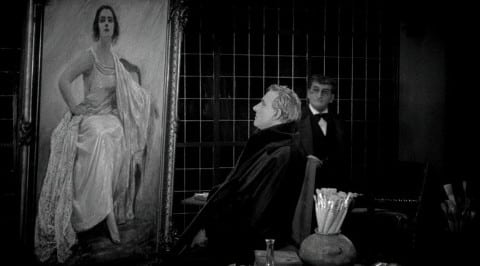
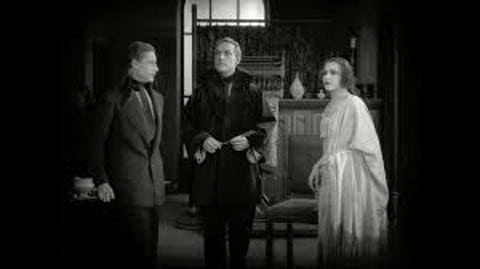

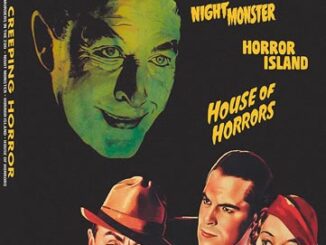
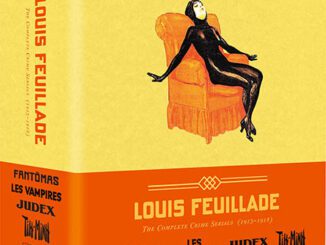
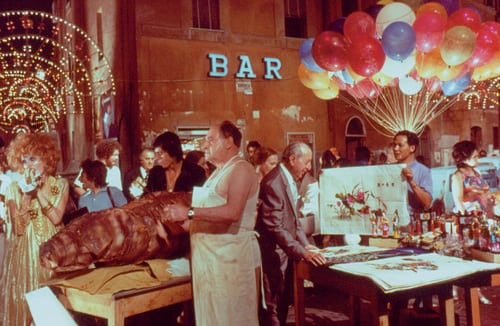
Be the first to comment